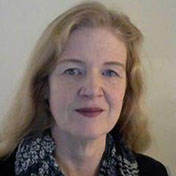The body’s internal clock regulates when people feel sleepy and when they wake up. Non-24-hour sleep-wake disorder (N24SWD) occurs when a person’s sleep-wake cycle does not synchronize with the 24-hour daylight cycle. People with this rare disorder may have trouble falling asleep at night and staying awake during the day.
N24SWD affects less than 100,000 people in the U.S. The disorder happens more frequently in people with total blindness and rarely in people who perceive light. Treatments include medication, light therapy, and establishing a sleep schedule.
What Is Non-24-Hour Sleep-Wake Disorder?
People with N24SWD experience periods where they are wakeful at night and excessively sleepy during the day. Since their sleep and wake time moves a little later every day, people with this sleep disorder have periods when their sleep syncs up with the environment. During these periods, people with N24SWD may wake up and go to sleep at the appropriate times.
N24SWD symptoms can interfere with daily life.
- Excessive daytime sleepiness: People with N24SWD find it difficult to stay awake during the day.
- Trouble falling asleep: N24SWD causes periods of insomnia where a person has trouble getting to sleep or increased sleep latency.
- Sleeping more than usual: People who perceive light and have N24SWD may sleep for longer periods of time.
Some people may refer to non-24-hour sleep-wake disorder as free-running disorder, non-entrained disorder, N24, or N24SWD.
What Are Circadian Rhythm Sleep Disorders?
Circadian rhythm sleep disorders arise when the body’s internal clock gets out of sync with the environment. These circadian rhythms or biological patterns follow a daily 24-hour cycle.
Some circadian rhythm disorders emerge when a person’s internal timing system does not line up with the environment’s circadian signals.
- Non-24-hour sleep-wake disorder: The body’s internal clock cannot synchronize with the 24-hour day-night cycle.
- Delayed sleep phase disorder: This disorder delays sleep onset, causing wakefulness late at night, usually after midnight.
- Advanced sleep phase disorder: This disorder leads to early evening sleepiness followed by early awakening.
- Irregular sleep-wake disorder: The daily sleep pattern is not governed by circadian rhythms which leads to fragmented sleep multiple times during the day.
Other circadian rhythm disorders occur because an external factor causes a person’s sleep-wake cycle to become out of sync:
- Jet lag disorder: Travel across multiple time zones causes a person’s body clock to be out of sync with their current time zone leading to jet lag.
- Shift work disorder: This disorder manifests when work schedules require a person to work during the dark and sleep during the day.
Causes of Non-24-Hour Sleep-Wake Disorder
The average person’s internal circadian rhythm typically lasts a little longer than 24 hours. External cues, especially light, help adjust the body’s internal clock to match the 24-hour light-dark cycle in the environment.
Individuals with N24SWD caused by total blindness do not receive light cues from the environment which adjusts their internal daily clock. But the cause of non-24-hour sleep-wake disorder in people who still perceive light is unknown.
Other Causes of Non- 24-Hour Sleep-Wake Disorder
N24SWD occurs less often in people with light perception, and the causes of the disorder remain unclear. Experts believe that people who have delayed sleep-wake phase disorder sometimes go on to develop N24SWD.
N24SWD in people who perceive light may happen because of differences in their biological clocks or altered brain responses to light. And some people with traumatic brain injury develop this disorder.
Sleep-Wake Disorders and Blindness
N24SWD occurs more often among people with blindness who have no light perception than among people who can perceive light. Experts believe that over half the people with total blindness have disrupted circadian rhythms leading to sleep problems.
Light, the most powerful cue, synchronizes a person’s circadian rhythm to the environmental cycles of day and night. When the sun goes down, the body produces the hormone melatonin to make people feel sleepy at night. Individuals without light perception don’t receive the light-dark cues that stimulate melatonin production in the evening.
Not all people with total blindness develop N24SWD. This may be because they have a natural body rhythm that closely matches the environmental cues or they are more sensitive to other circadian clues like exercise, meals, and social interactions.
Treating Non-24-Hour Sleep-Wake Disorder
There are a number of treatment approaches for N24SWD. The goal of treatment is to align the sleep-wake cycle with the 24-hour day. The treatment of choice may differ based on whether the individual being treated perceives light.
Melatonin: Low-dose melatonin a few hours before bedtime may synchronize the internal circadian rhythm to the environmental cycle of day and night.
Medication: The doctor may prescribe a drug that helps activate melatonin receptors in the brain. But not everyone responds to this type of medication which may take a number of weeks to show improvement.
Lifestyle changes: Establishing and sticking with a regular sleep schedule, maintaining social interactions, and keeping consistent meal times can help normalize the sleep-wake cycle.
Light therapy: For people who perceive light, treatment with a bright light from a lightbox or exposure to natural sunlight for at least half an hour after awakening may realign their internal clock to the 24-hour cycle.
Frequently Asked Questions About Non-24-Hour Sleep-Wake Disorder
Does Non-24-Hour Sleep-Wake Disorder Come and Go?
N24SWD appears to come and go because of the cyclical nature of the disorder. Sometimes, the sleep-wake cycle of people with N24SWD syncs up with the cycles of day and night in their environment. But their sleep-wake cycle continues to shift a little later each day until the out-of-sync pattern leads to insomnia and daytime sleepiness.
Is Non-24-Hour Sleep-Wake Disorder a Disability?
Under the Americans with Disabilities Act (ADA), non-24-hour sleep-wake disorder qualifies as a disability because the disorder may substantially limit major life activities. Meeting the ADA’s criteria for disability may protect an individual from discrimination in employment and other areas.
How Do You Know if You Have Non-24-Hour Sleep-Wake Disorder?
The major symptoms of N24SWD include feeling sleepy during the day and wakeful at night. Since many disorders present with these symptoms, ask your doctor to evaluate your symptoms to determine their cause.
References
Ask the Sleep Doctor
Have questions about sleep? Submit them here! We use your questions to help us decide topics for future articles, videos, and newsletters. We try to answer as many questions as possible. You can also send us an email. Please note, we cannot provide specific medical advice, and always recommend you contact your doctor for any medical matters.







